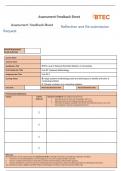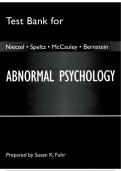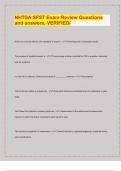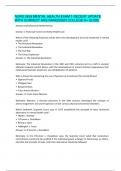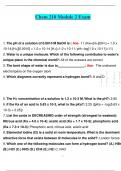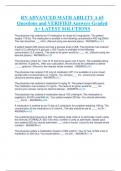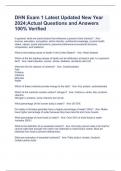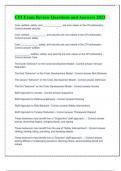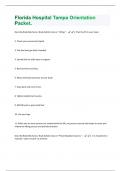Essay
Pearson BTEC Level 3 Extended Diploma in Computing - Unit 23.2 Systems Methodology
- Institution
- PEARSON (PEARSON)
Complete Assignment of Unit 23.2 Systems Methodology with a Distinction Grade achieved in. DISCLAIMER! I do not recommend copying and pasting this document for your assignment as I have been a student myself and I have uploaded this assignment to TurnItIn. If you copy paste then this might flag ...
[Show more]
